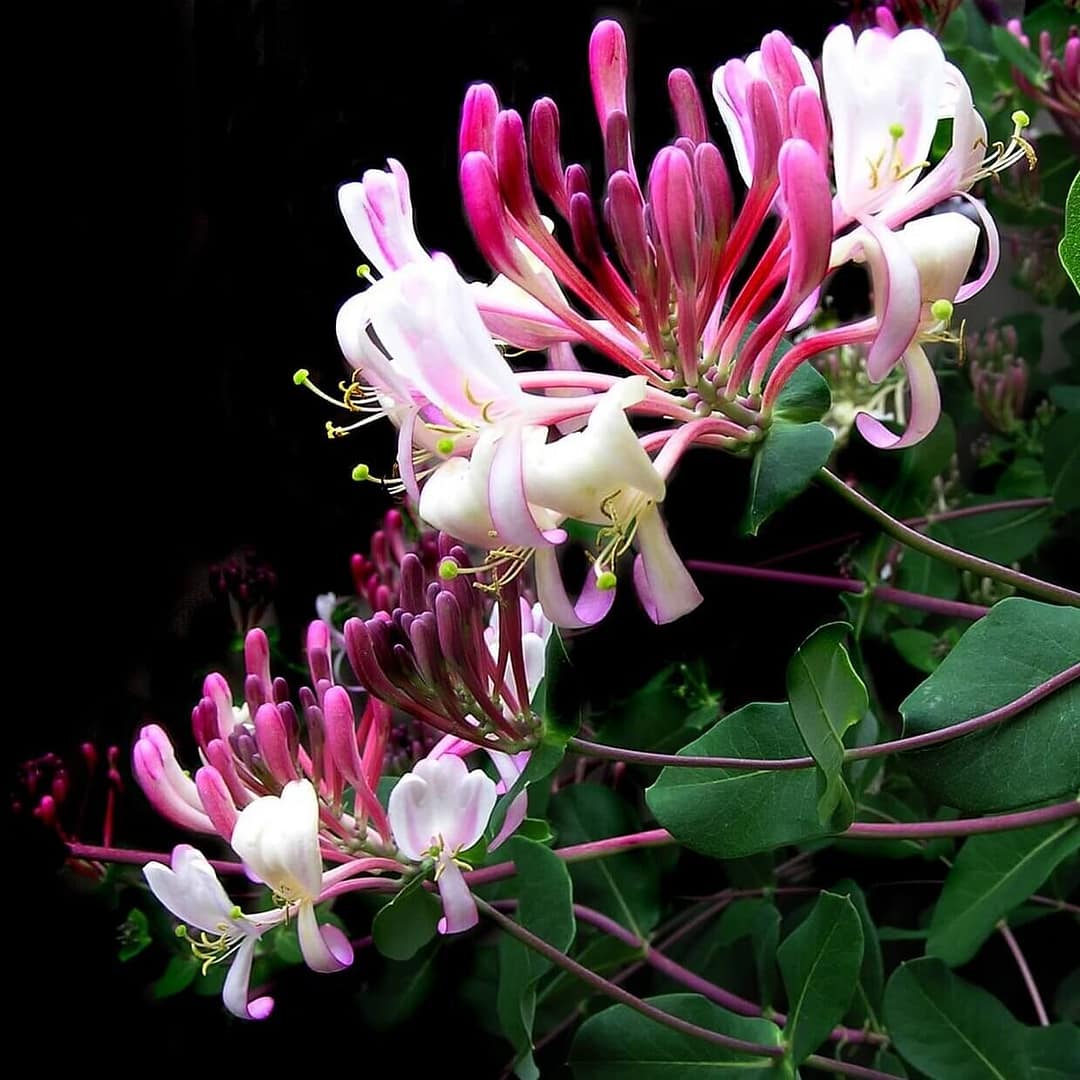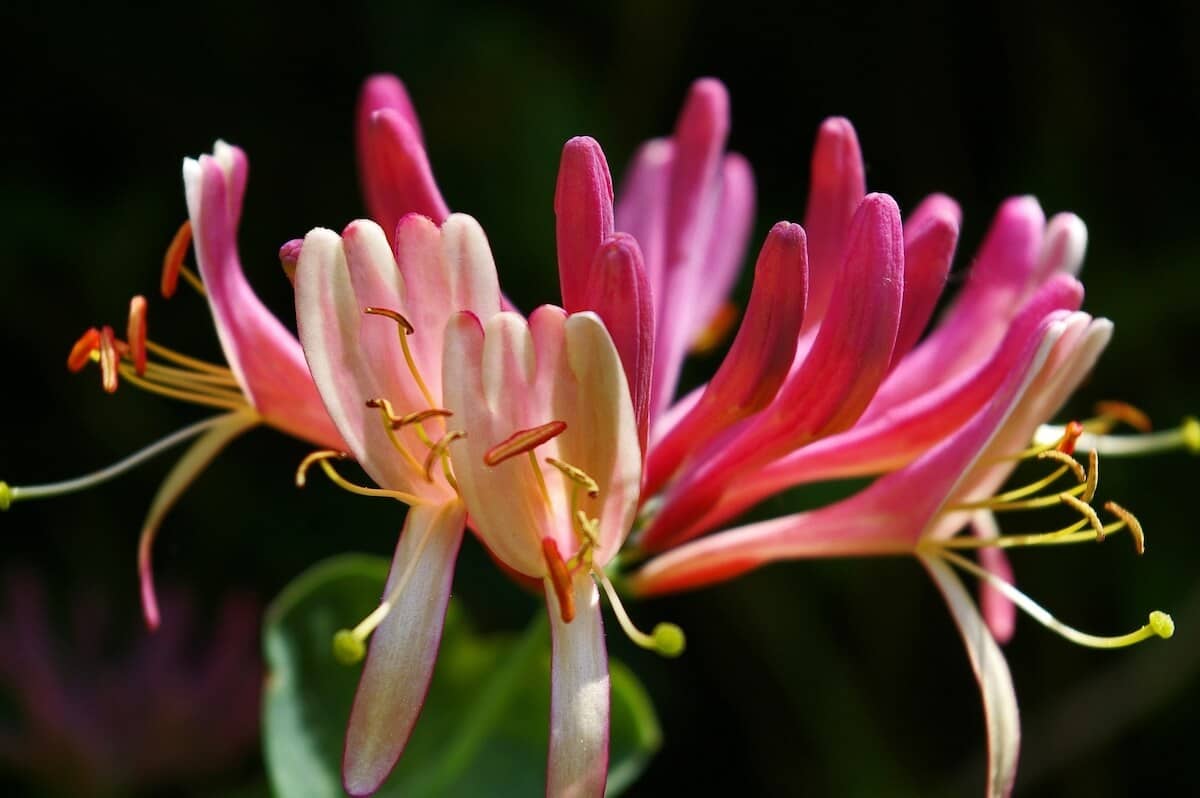
Position
- Partial shade to full sun
- North, south, east, or west-facing aspects
- Sheltered or exposed sites suitable
- Best against walls, fences, or climbing through trees
Hardiness
- Tolerates temperatures down to -20°C (-4°F)
- Fully hardy throughout UK
Soil
- Moist but well-drained soil
- Thrives in chalk, clay, sand, or loam
- Rich, humus-rich soil preferred
- Suits acid, alkaline, or neutral pH soils
- Grab a soil test kit and ensure the perfect conditions for growth
Height
- Height: 6-8 metres in 5-10 years
- Spread: 1-2 metres
Seasons of Interest
- Flowering period: May to July (earlier than other varieties)
- Dark pink-red buds opening to creamy-yellow flowers
- Strong, sweet fragrance
- Deep green foliage
- Red berries in autumn
Additional Notes
- Earlier flowering than most other honeysuckles
- Excellent for pollinators
- Regular pruning after flowering maintains shape
- Can suffer from powdery mildew if too dry
- Apply thick mulch in spring
- May need winter protection in very exposed sites
- Great companion for climbing roses
- Ideal for cottage gardens
- Strong evening perfume
- Good for cutting gardens
How to Grow Early Dutch Honeysuckle - An Expert Guide to a Classic Climbing Favourite
Early Dutch Honeysuckle (Lonicera periclymenum Belgica) is a much-loved climber that combines strong, fast growth with a sweet, lingering fragrance and showy, two-tone flowers. Ideal for training up trellises, fences, pergolas, or arches, this traditional deciduous vine brings a romantic charm to any garden. In this detailed growing guide, you’ll learn how to plant, grow, and care for Early Dutch Honeysuckle — making it a reliable addition to wildlife-friendly and ornamental spaces.
What Makes Early Dutch Honeysuckle (Lonicera ‘Belgica’) So Appealing?
Lonicera periclymenum Belgica, often called Early Dutch Honeysuckle, is prized for its vigorous climbing habit and long flowering season. The tubular blooms are eye-catching, with deep reddish-pink outer petals and creamy white throats that fade to buttery yellow as they age. These flowers provide visual interest from late spring into summer and release a rich, sweet scent that’s strongest in the evening — perfect for sensory planting schemes and summer entertaining areas.
Its rapid growth and twining stems make it an excellent choice for covering vertical structures such as fences, walls, sheds, and arbours. And because it occupies very little ground space, it’s ideal for compact gardens or for limited horizontal space.
Best Planting Conditions for Lonicera periclymenum Belgica
Select a position in full sun or partial shade to give your honeysuckle the best start. While it will tolerate full sun, this cultivar performs best when it receives afternoon shade — particularly in warmer southern regions — which helps preserve flower colour and fragrance.
The soil should be moist but well-drained. Dig in plenty of well-rotted organic matter such as compost or manure to enrich the planting site and improve soil structure. Honeysuckle prefers slightly alkaline to neutral soils, but it’s generally tolerant of most conditions as long as adequate drainage.
Before planting, install a robust support structure, such as a trellis, wire frame, or pergola. Lonicera ‘Belgica’ is a strong climber and will quickly require something sturdy to latch onto.
Ongoing Care and Maintenance for Early Dutch Honeysuckle
Once planted, please keep the soil moist until the honeysuckle is well established. Mulching in spring with composted bark or well-rotted manure helps retain moisture and cool roots during hot spells. As the plant matures, it becomes more drought-tolerant, though it still appreciates regular watering during dry periods.
To encourage bushier growth and a second flush of flowers, prune after the initial flowering by cutting back about one-third of the spent flowering stems. This promotes new shoots and helps keep the plant neat and manageable.
In late winter, give established plants a harder prune to maintain their shape, remove dead or overcrowded stems, and invigorate fresh spring growth. Take this opportunity to inspect and tighten any support structures.

Flowering Timeline: What to Expect
Lonicera ‘Belgica’ typically starts blooming in late spring, often as early as May, and continues into mid-summer. The two-tone flowers begin as creamy white and deep rose pink, slowly maturing to soft yellow tones as they age, creating a delightful multi-coloured display on a single plant.
The flowers emit a rich fragrance, especially noticeable in the evening, making this an ideal choice for positioning near patios or seating areas. In autumn, clusters of glossy red berries are beautiful to birds and wildlife.
Companion Planting: What Grows Well With Early Dutch Honeysuckle?
Early Dutch Honeysuckle pairs beautifully with other climbing plants, especially clematis. Clematis varieties with different flowering times can extend visual interest throughout the growing season and complement honeysuckle’s lush foliage and vibrant blooms.
When selecting companion climbers, ensure their growth habits and support needs align, and avoid overcrowding, which can reduce airflow and increase the risk of disease. Planting with evergreen shrubs or groundcover beneath can enhance the display and fill the lower part of the support structure, where honeysuckle may be less leafy.
Seasonal Care: A Year-Round Overview
As a deciduous climber, Early Dutch Honeysuckle will shed its leaves in autumn. This is perfectly natural and part of its seasonal cycle. Pruning helps maintain structure and shape in winter, allowing strong new growth to emerge in spring.
Keep an eye on the climbing framework or supports, particularly in windy or exposed areas. As the plant grows vigorously, it can put considerable weight on fences or trellises, so regular checks and light maintenance are key to long-term success.
Design Ideas: Where to Use Lonicera ‘Belgica’ in the Garden
Early Dutch Honeysuckle is incredibly versatile thanks to its traditional appeal and strong climbing habit. In cottage gardens, it adds vertical interest and informal charm when trained over arches, fences, or along stone walls. In more formal garden designs, it can soften rigid structures or bring seasonal contrast to evergreen backdrops.
Because it’s so floriferous and fragrant, it also works well in sensory gardens, wildlife borders, and outdoor seating areas — wherever you want a burst of colour, scent, and life.
Attracting Wildlife with Early Dutch Honeysuckle
Lonicera periclymenum ‘Belgica’ is an excellent plant that encourages biodiversity. The richly scented flowers are a magnet for pollinators, especially bees, butterflies, and moths. Come autumn, the bright red berries provide a welcome food source for garden birds such as blackbirds and thrushes.
If you’re designing a wildlife-friendly garden, this honeysuckle is a fantastic addition. It offers habitat and nourishment throughout multiple seasons.
From Darren’s Patch
This is one of my favourite honeysuckles, and with good reason. In my garden, I’ve trained Lonicera periclymenum ‘ Belgica’ over an old timber arch, and every year it rewards me with a flurry of richly scented blooms from late spring onwards. The fragrance in the early evening is absolutely unforgettable — it fills the garden and brings in the bees and moths like clockwork. I find it especially useful in tighter spaces where you want to add vertical interest without taking up too much soil. It’s quick to establish, low-maintenance, and provides that perfect mix of beauty and purpose — lovely to look at and great for pollinators. If you’re after a classic climber that earns its keep year after year, this is one I’d wholeheartedly recommend.
![]()
Key Points to Remember:
- Plant in well-drained soil
- Provide a strong support structure
- Regular watering during establishment
- Prune after first flowering
- Grows well with clematis
- Attracts wildlife
- Evening fragrance
- Deciduous nature
- Suitable for most garden styles
- Benefits from afternoon shade
Early Dutch Honeysuckle (Lonicera periclymenum ‘Belgica’) is more than just a beautiful flowering plant — a hardworking, wildlife-friendly climber that brings colour, fragrance, and structure to various garden settings. Whether you’re training it over an archway, cloaking an unsightly fence, or adding height to a cottage border, this vigorous honeysuckle delivers long-lasting visual appeal and seasonal interest.
With the proper support, well-prepared soil, and a little seasonal care, Belgica will reward you with months of richly scented blooms and attract beneficial insects and birds to your garden. Its fast-growing nature and romantic, two-tone flowers make it a standout choice for anyone looking to add vertical impact and natural beauty to their outdoor space.
If you’re planning a garden that’s as inviting for pollinators as it is for people, Early Dutch Honeysuckle deserves pride of place.
Check out the RHS article here.
Explore our full collection of planting guides for expert advice on climbers and wall shrubs.
Want to learn about other climbers? Read about Lonicera Caprilia Imperial here.
Frequently Asked Questions
Q: What is Lonicera periclymenum ‘Belgica’?
A: Lonicera Belgica, commonly known as Early Dutch Honeysuckle, is a vigorous deciduous climber that features fragrant flowers. It’s perfect for twining around trellises or pergolas in your garden.
Q: How should I prune my Lonicera Belgica?
A: To keep your Lonicera Belgica looking fabulous, it’s best to prune it back after flowering. This helps maintain its shape and encourages healthy growth for the following season!
Q: What type of soil does Lonicera Belgica prefer?
A: This lovely climber thrives in well-drained soil rich in organic matter. Adding some well-rotted manure can work wonders for its growth!
Q: Is Lonicera Belgica suitable for a cottage garden?
A: Absolutely! Lonicera Belgica fits perfectly into a cottage garden vibe with its charming, fragrant flowers and lush foliage. Plus, it’s a fantastic climber for creating that romantic look!
Q: Can Lonicera periclymenum ‘Belgica’ attract wildlife?
A: Yes, it certainly can! The fragrant flowers of Lonicera Belgica are a big hit with pollinators like bees and butterflies, making it a fantastic addition to your wildlife garden.
Q: How long does it take for Lonicera Belgica to flower?
A: You can expect Lonicera Belgica to start blooming in early summer. Ornamental red berries follow the flowers, adding more interest to your garden!
Q: Where can I buy Lonicera periclymenum ‘Belgica’?
A: You can easily buy Lonicera Belgica at your local garden centre or online. Search for “buy early Dutch honeysuckle Lonicera” to find the perfect plant!
Q: Is Lonicera Belgica an evergreen plant?
A: No, Lonicera Belgica is a deciduous climber. This means it sheds its leaves in autumn, but don’t worry, it returns beautifully in spring!
Q: What are the benefits of having Lonicera periclymenum ‘Belgica’ in my garden?
A: Besides its stunning fragrant flowers, Lonicera Belgica is easy to grow and perfect for covering walls or fences. Its fruits are ornamental, adding more visual appeal to your garden!
